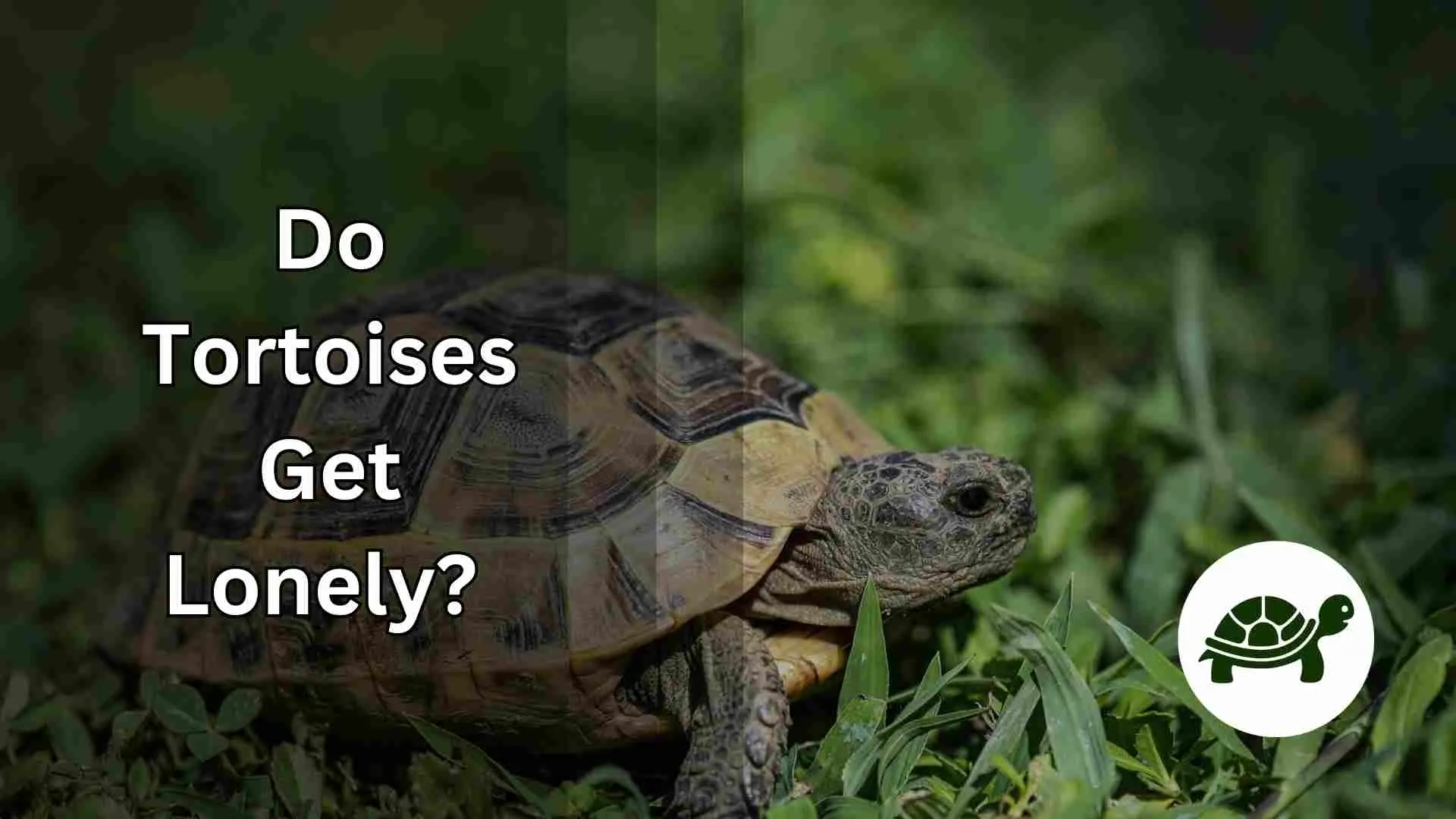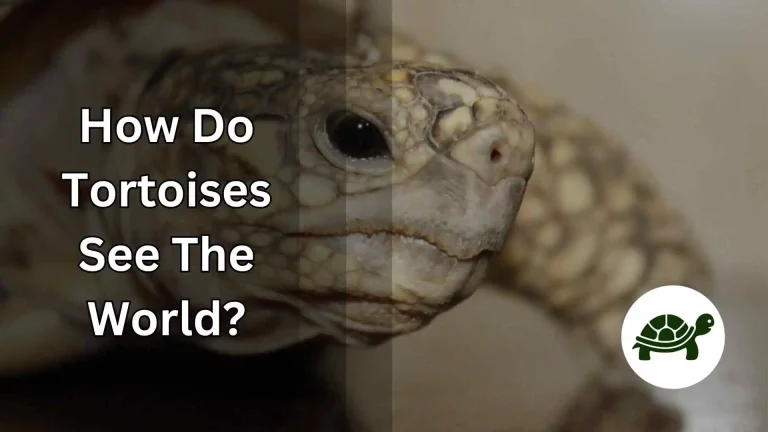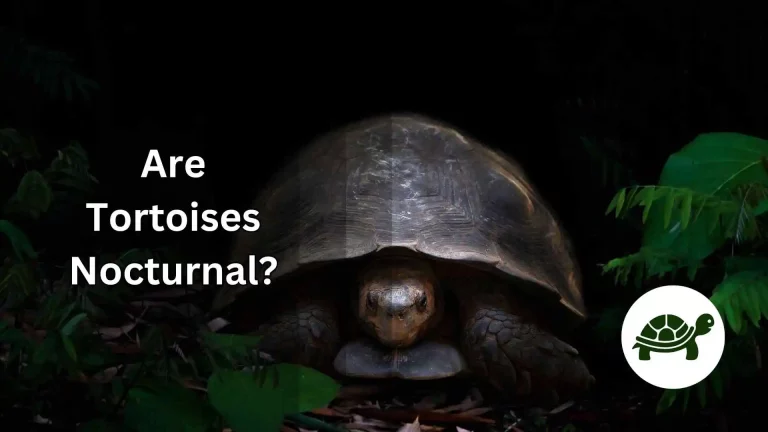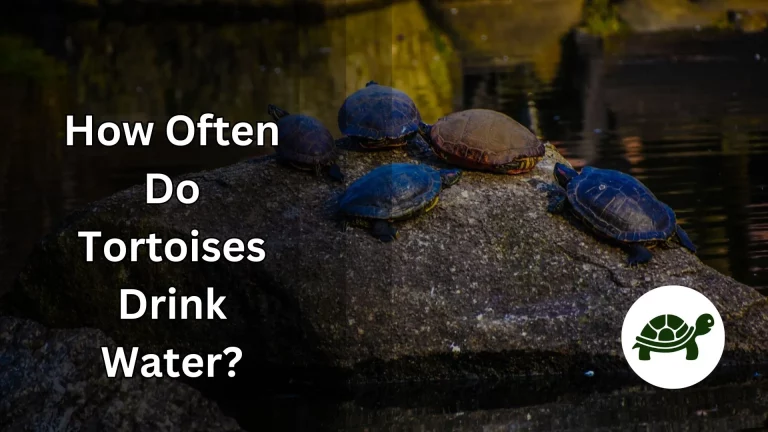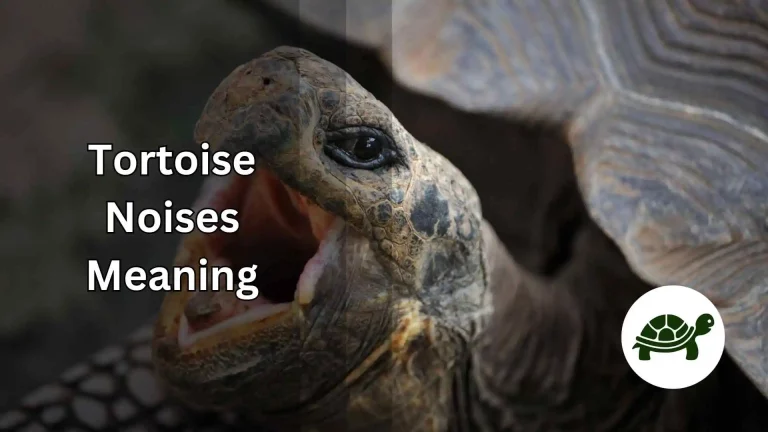Do Tortoises Get Lonely? – All You Need To Know
Tortoises, with their stoic demeanor and slow pace, often raise a curious question: “Do tortoises get lonely?” It’s a natural query, especially when you see one plodding along, seemingly in a world of its own. While reptiles don’t express emotions in ways mammals do, that doesn’t mean they’re void of social tendencies or needs.
In the wild, these shelled wonders navigate a realm teeming with interactions, challenges, and discoveries. Some species exhibit more solitary lifestyles, while others may show surprisingly social behaviors. As tortoise owners or enthusiasts, it’s crucial to dive deeper into their social landscapes, debunking myths and truly understanding what goes on beneath that hard shell.
Contrary to many assumptions, tortoises have intricate behaviors and needs. This article aims to shed light on the burning question of tortoise loneliness, exploring their natural behaviors, and offering insights for those caring for these ancient reptiles at home.
Natural Habitat and Behavior
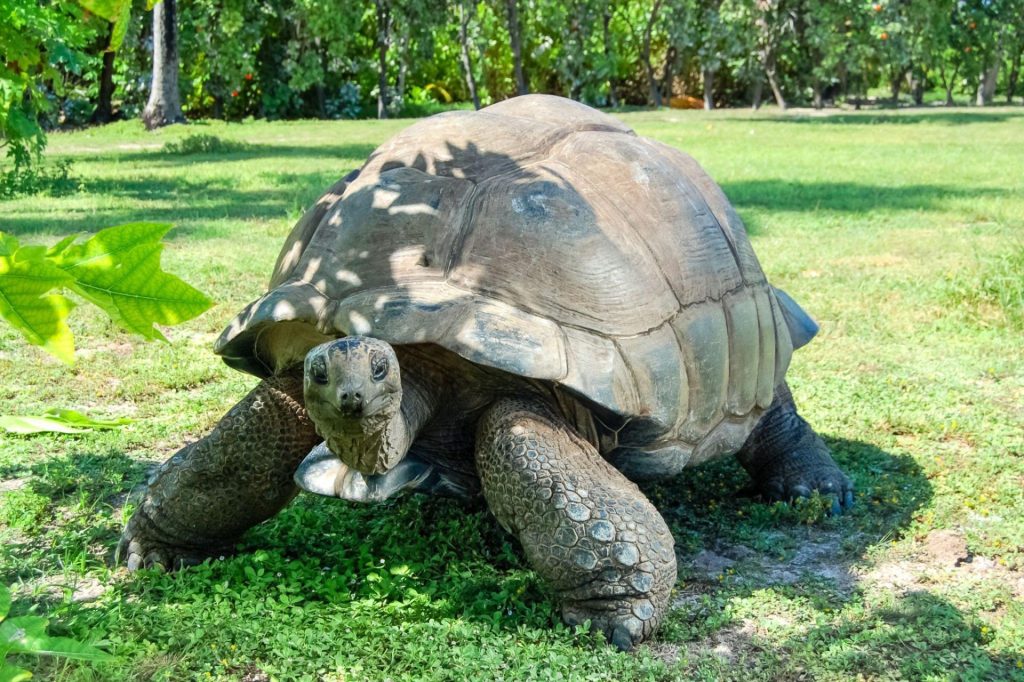
Tortoises, often mistaken for their aquatic counterparts, turtles, primarily dwell on land. These magnificent creatures grace various habitats, from sun-baked deserts to lush grasslands and dense forests. The vast diversity in their natural habitats has directly influenced their behavioral traits and social tendencies.
It’s fascinating to note that while some tortoises prefer their own company, others can exhibit group behaviors, especially during activities like basking or foraging. These natural tendencies offer invaluable insights for those wishing to replicate a slice of their wild habitat at home. By understanding their inherent behavior, we can better cater to their needs and ensure their well-being in captivity.
The Social Spectrum of Tortoises

Tortoises, much like us humans, are not a one-size-fits-all when it comes to sociability. Their interactions span a spectrum, from fiercely independent to surprisingly communal, and everything in between. This social spectrum is often shaped by both their evolutionary lineage and their immediate environmental context.
For instance, the Galápagos tortoises, iconic giants of their namesake islands, are known to lead largely solitary lives, with interactions primarily occurring during mating periods. Their vast size and the sparse resources of their volcanic home might explain this preference for solitude. On the other hand, Russian tortoises, which inhabit the rocky steppes of Central Asia, are often found in groups, especially when sunbathing or seeking shelter. Their mutualistic behaviors can sometimes be mistaken for camaraderie, emphasizing the importance of understanding species-specific nuances.
However, it’s pivotal to note that what might appear as ‘friendship’ to us could be something entirely different in the tortoise world. While they might not bond in the traditional sense we understand, they do form hierarchies, territories, and display behaviors influenced by both instinct and environment. Recognizing and respecting this spectrum is vital for anyone considering multiple tortoises as companions, ensuring each tortoise’s individual needs are met.
Signs of Loneliness or Stress in Tortoises
When observing a tortoise, its actions and behaviors often communicate much more than meets the eye. While they don’t wear their hearts on their shells, tortoises do exhibit distinct signs when they are stressed or uncomfortable. While it’s a stretch to humanize these behaviors as ‘loneliness’ in the way we understand it, recognizing them is paramount for the well-being of these resilient reptiles.
1. Pacing and Restlessness
A tortoise that frequently paces the boundaries of its enclosure may be expressing discomfort. This could be due to a variety of reasons, from a small habitat size to a lack of environmental enrichment. It’s an indication that something in its environment might need adjusting.
2. Reduced Appetite
While tortoises may naturally have fluctuating appetites based on factors like temperature or seasonal changes, a prolonged loss of appetite could signify stress. Regular monitoring of their food intake and weight is essential.
3. Hiding or Retreating
A tortoise that constantly hides, especially if it was previously more outgoing, may be feeling threatened or stressed. Ensure there are no potential stressors in their environment, like aggressive companions or unsuitable habitat conditions.
4. Aggressive Behavior
An uptick in aggressive actions, such as biting or ramming, especially towards other animals or even their human caregivers, can be a sign of distress. This could be territorial behavior, especially in males, or a reaction to an external stressor.
5. Physiological Symptoms
In extreme cases, prolonged stress can manifest in physical symptoms like softening of the shell or respiratory issues. Immediate veterinary attention and care adjustments are necessary in such scenarios.
In essence, while tortoises might not experience loneliness as we do, they certainly exhibit behaviors indicative of discomfort or distress. By being attuned to these signs, caregivers can ensure they provide an environment that mimics their natural habitat as closely as possible, fostering both physical and psychological well-being.
The Risks of Pairing Tortoises
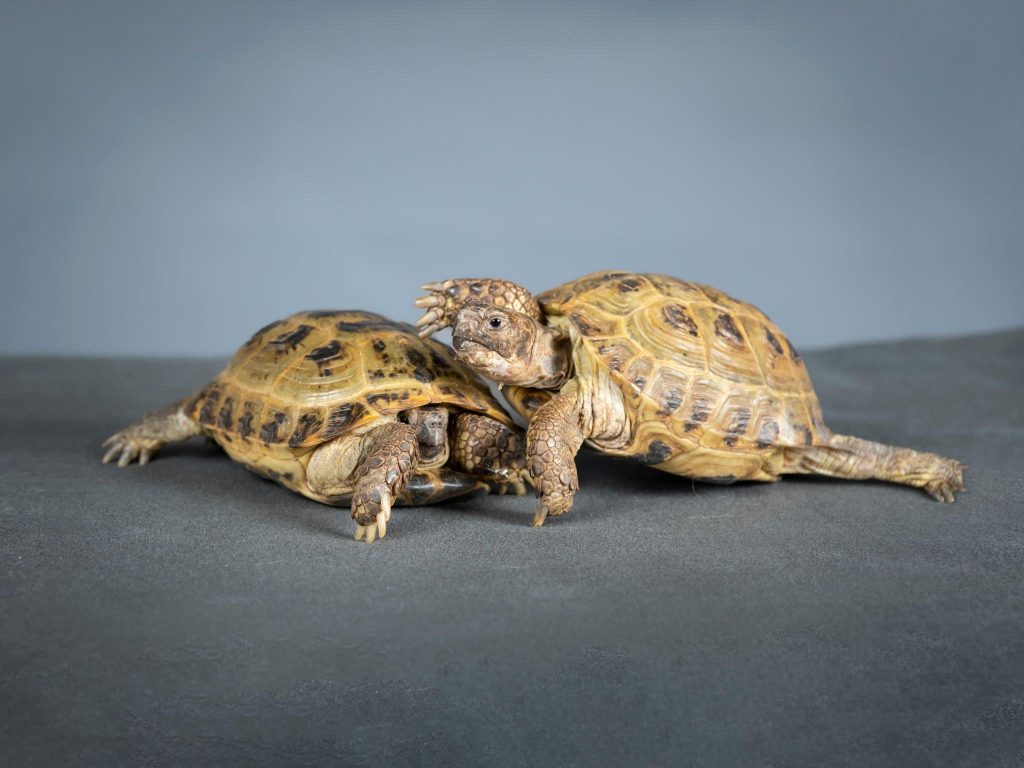
Introducing a new companion to a tortoise’s environment might seem like a heartwarming gesture, especially when we think of our own social needs. However, in the tortoise realm, companionship doesn’t always equate to harmony. Before making a decision to pair tortoises, it’s essential to understand the potential risks and challenges that can arise.
1. Territorial Disputes
One of the most common issues with pairing tortoises is territorial aggression. Especially if the habitat is not spacious enough, tortoises can become possessive of their territory. This behavior can escalate to chasing, biting, or even ramming, which can lead to injuries.
2. Mismatched Sizes or Ages
Introducing a much smaller or younger tortoise to an enclosure with a larger, older individual might lead to bullying. The younger or smaller tortoise could get injured or become stressed due to the dominance of the other.
3. Breeding Complications
When pairing opposite sexes, there’s a chance of breeding. Without the right conditions, females can face issues like egg-binding. Additionally, constant mating attempts can stress the female and lead to physical harm.
4. Disease Transmission
If the new tortoise hasn’t been adequately quarantined or vet-checked, there’s a risk of introducing diseases or parasites into the environment, jeopardizing the health of both reptiles.
5. Dietary Disparities
Different tortoise species have varied dietary needs. Placing two different species together might make it challenging to cater to each one’s specific nutritional requirements.
6. Emotional Stress
While tortoises don’t have emotions like humans, they do experience stress. Constantly being on edge due to an aggressive or overly dominant tankmate can take a toll on their health and well-being.
In light of these potential challenges, careful consideration is needed before pairing tortoises. If the decision is made to introduce a companion, it should be done with ample preparation, observation, and a readiness to intervene if things don’t go as planned. Remember, sometimes, the kindest thing we can do for our shelled friends is to respect their solitary nature and ensure their individual needs are met.
Alternatives to Getting Another Tortoise

While our first instinct to address perceived loneliness in a pet might be to introduce a companion, with tortoises, this approach can be fraught with challenges. Fortunately, there are alternative ways to enrich their lives and cater to their well-being without necessarily bringing in another shelled friend.
1. Habitat Enrichment
Transforming a tortoise’s environment can be a game-changer. Introducing safe plants, rocks, tunnels, or even shallow water areas can give them new territories to explore and can simulate the diversity of their natural habitats. This not only keeps them engaged but also promotes physical activity.
2. Interactive Toys
Believe it or not, tortoises can be quite curious! Toys like treat balls, mirrors (used sparingly and under supervision), or even colorful, safe objects can pique their interest and offer mental stimulation.
3. Foraging Opportunities
In the wild, tortoises spend a considerable amount of time foraging for food. Recreate this experience by scattering their food around the enclosure, encouraging them to ‘hunt’ and stay active.
4. Regular Interaction
While they might not be as expressive as a cat or dog, many tortoises recognize and react to their human caregivers. Gentle interactions, talks, or supervised outings (in safe areas) can be enriching for them.
5. Routine and Consistency
Tortoises thrive on routine. Keeping a consistent schedule for feeding, cleaning, and interacting can provide them with a sense of security and predictability.
6. Periodic Habitat Changes
Every few months, consider rearranging their habitat elements. This ‘new’ environment can be an adventure for them, offering new paths and spots to discover.
7. Attend to their Basic Needs
Ensuring they have adequate UVB lighting, the right temperatures, and a balanced diet can greatly contribute to their overall contentment. Sometimes, just attending to these basics can make all the difference.
Conclusively, while the idea of companionship can seem appealing, the essence of tortoise care lies in understanding and respecting their unique behaviors and needs. By implementing these alternative enrichment methods, one can provide a fulfilling life for their tortoise, all while ensuring their well-being is at the forefront.
Frequently Asked Questions (FAQs) About Tortoise Behavior and Companionship
Navigating the world of tortoise behavior can lead to numerous questions. Here, we’ve compiled some of the most frequently asked queries to help guide both current and prospective tortoise owners on their journey.
1. Can I house different species of tortoises together?
While it might seem like a fun idea, mixing species can be problematic. Different tortoises have distinct habitat, dietary, and care requirements. Moreover, there’s a risk of disease transmission or aggressive behavior between species that aren’t naturally cohabiting.
2. How can I tell if my tortoise is stressed?
Tortoises may exhibit several signs of stress, such as reduced appetite, pacing, persistent hiding, or even aggressive behaviors. It’s essential to monitor their behavior regularly and consult with a reptile veterinarian if you notice drastic changes.
3. Do tortoises recognize their owners?
Many tortoise owners report that their pets seem to recognize them, reacting differently to their presence compared to strangers. While they don’t “bond” in the same way mammals do, consistent and gentle interactions can lead to a familiarity response in tortoises.
4. How can I safely introduce a new tortoise to my current one?
Introductions should be approached with caution. Start by quarantining the new tortoise for several weeks to ensure it’s free from diseases. When introducing, monitor their behaviors closely in a neutral space. If there are signs of aggression or stress, it’s best to keep them separate.
5. Do tortoises need playtime outside their enclosure?
While not necessarily ‘playtime’, tortoises can benefit from supervised time outside, especially in natural sunlight. Ensure the area is safe, free from potential threats like predators, and that the tortoise can’t escape.
Conclusion
Tortoises, with their stoic demeanor and slow-paced lives, are indeed fascinating creatures. While it’s tempting to anthropomorphize their behaviors and attribute human emotions to them, it’s vital to remember that their needs and perceptions differ from ours. Rather than focusing on notions of loneliness, the key lies in understanding and replicating their natural habitats, behaviors, and rhythms. This ensures that we provide them with a life that’s both enriching and true to their essence.
As tortoise enthusiasts or caregivers, our primary duty is to prioritize their well-being over our assumptions or desires. By immersing ourselves in the wealth of knowledge about these ancient reptiles, we can foster environments where they don’t just survive, but thrive. The journey with a tortoise is a unique one, filled with lessons in patience, observation, and reverence for nature’s marvels.

